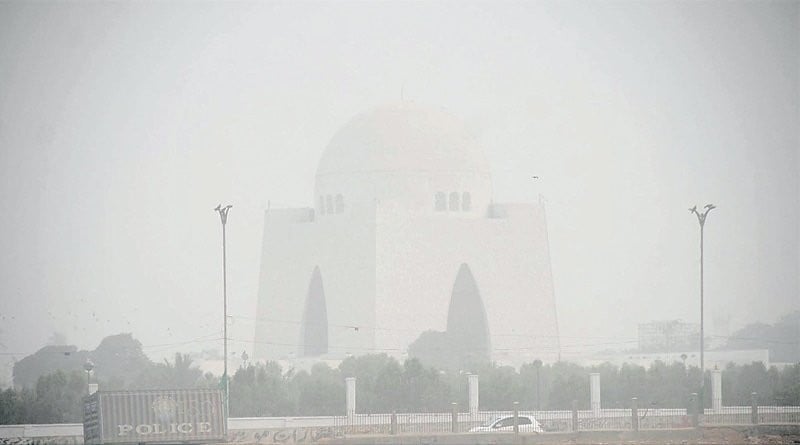KARACHI:Pakistan has been ranked second in the latest list of countries with the worst air quality, an outcome that environmentalists say illustrates a sorry tale of negligence and governmental failures.
Bangladesh, Pakistan and India were the world’s three smoggiest countries in 2023, according to a recent report by Swiss monitor IQAir, painting a bleak picture for South Asia in terms of air quality.
In Pakistan, average concentrations of PM2.5 – airborne particles known to cause lung damage – reached 73.7 micrograms, increasing from 70.9 and remaining exponentially higher than the World Health Organisation’s recommendation of 5 micrograms.
Bangladesh stood at 79.9 micrograms, while India was third with 54.4 micrograms.Lahore was the fifth-most polluted city in 2023, following India’s Begusarai, Guwahati, Delhi and Mullanpur.
Other major Pakistani cities with dismal air quality were Faisalabad, Peshawar, Rawalpindi, Karachi and Islamabad, which jumped from 17th to 9th in the list of the world’s most polluted capitals.
Among the major factors are climate change, industrial and vehicular emissions, increasing solid waste generation, deforestation, unplanned urbanization, and a population influx towards big cities, according to environmentalists.
Hamid Sarfraz, an Islamabad-based environmentalist, views the situation as a result of chronic “institutional and behavioural failures.”“It’s a multidimensional problem, which requires capacity-building and political will to implement environment-related laws. Both of these, unfortunately, have been lacking,” he told Anadolu.
There are existing laws that cover almost all the major drivers of air pollution in Pakistan, but government agencies simply lack the capacity for implementation, he said.
“The first is foremost requirement is more human resources and equipment for environmental protection agencies. Second, there has to be coordination at an institutional level between different government departments,” he said.
Citing an example, he said traffic police usually do not take action against smoke-emitting vehicles, which remain a major source of pollution in big cities, while environmental protection agencies do not have the capacity to address the issue.
“So, if these two departments collaborate, we can really cut down vehicular emissions,” he added.


